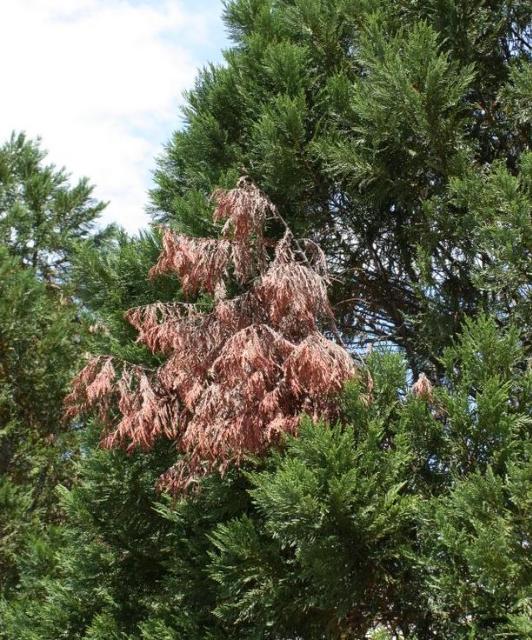
by Blake Thaxton | Aug 19, 2015
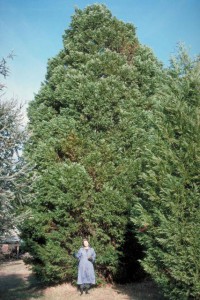
Photo Credit: Ed Gilman, UF/IFAS
Leyland cypress, x Cupressocyparis leylandii, has been hugely popular over the past 20 years as an ornamental landscape tree. It has the reputation of being a beautiful evergreen that can grow at a rate of up to 3 to 4 feet per year. Sounds like the perfect option for someone looking to make their back yard more secluded and private. Because of these traits, it has been planted widely throughout the southeastern US, including the Florida panhandle, only to succumb to intense environmental conditions and disease pressure.
UF/IFAS suggests that other species be used in place of Leyland cypress because of the damaging effects of Seiridium canker. The disease is a fungal organism that attacks the tree after periods of drought while the tree is under stress. Once the stress has occurred and rain does arrive the fungus attacks the vulnerable trees in the wetter periods. The major symptom is “flagging” or branches that have turned brown that can be scattered throughout the tree. This is caused by a canker further up the brown branch that has been girdled,cut of from the flow of water and nutrients to the branch by diseased tissue.
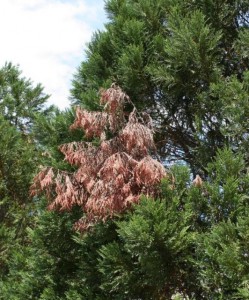
Flag branch on Leyland Cypress. Photo Credit: UF/IFAS
What are the options for Florida panhandle landscapers and homeowners? If you have a tree exhibiting symptoms of Seiridium canker, pruning the “flag” branches out several inches below the canker can prolong the life of the tree but is very unlikely to save it. The only long term sustainable option is to replace Leyland cypress with species that are resistant to the disease. The following are good examples of species that could be considered:
|
Common Name
|
Scientific Name
|
|
Atlantic white cedar
|
Chamaecyparis thyoides
|
|
Southern red cedar
|
Juniperus silicicola
|
|
Arizona cypress
|
Cupressus arizonica var. glabra
|
|
Mexican cypress
|
Cupressus lusitanica
|
|
Oriental arborvitae
|
Platycladus orientalis
|
|
“Green Giant” arborvitae
|
Thuja x ‘Green Giant’
|
|
Kashmir cypress
|
Cupressus cashmeriana
|
|
Chinese funeral cypress
|
Cupressus funebris
|
|
Chinese cypress
|
Cupressus chengiana
|
|
Hinoki cypress
|
Chamaecyparis obtusa
|
|
For more information read the University of Florida publication, Seiridium Canker of Leyland Cypress.
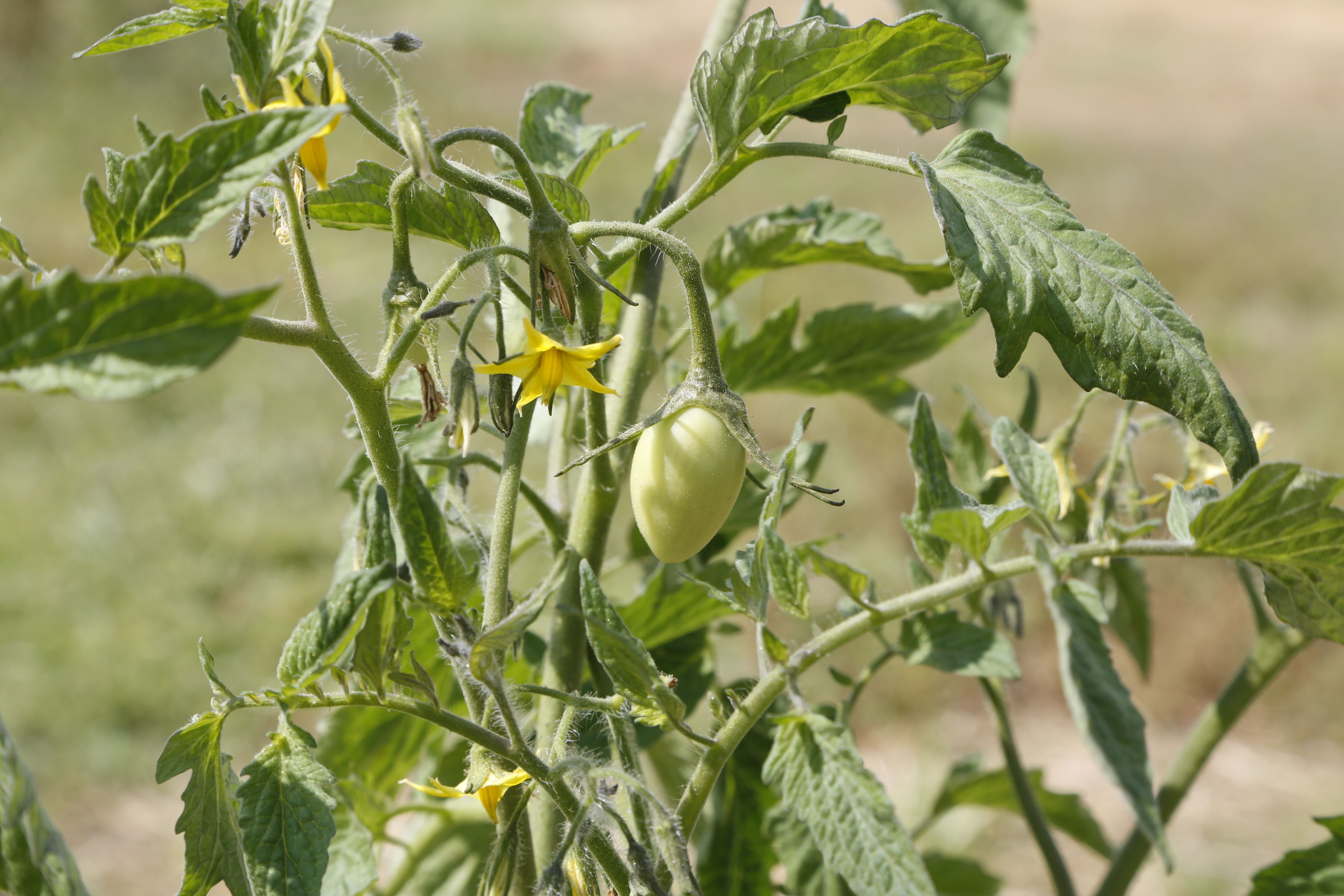
by Blake Thaxton | Jul 14, 2015
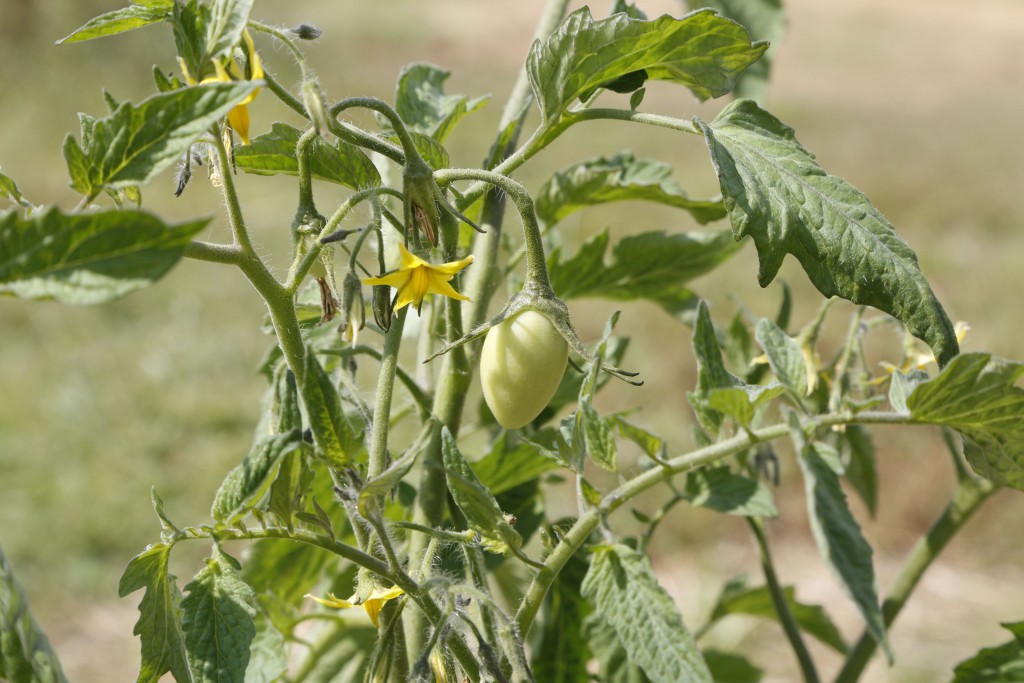
Photo Credit: Abbie Seales Rolph
One of the many great thing about living in Florida is the long growing season that the climate affords to gardeners. For up to 8 months a year warm season vegetables can be grown. The colder months are mild enough to grow other crops as well. Although most gardeners tomatoes are suffering from the extreme heat of the middle of Summer, fall preparations can begin for tomatoes.
Keeping in mind the first frost is likely to arrive at the beginning of November seeds need to be planted very soon. In general most varieties wont be ready for 70 days after transplant into the garden. To be sure to get a good harvest, fall tomatoes should be planted close to August 1st. This planting date gives a target first harvest of mid October.
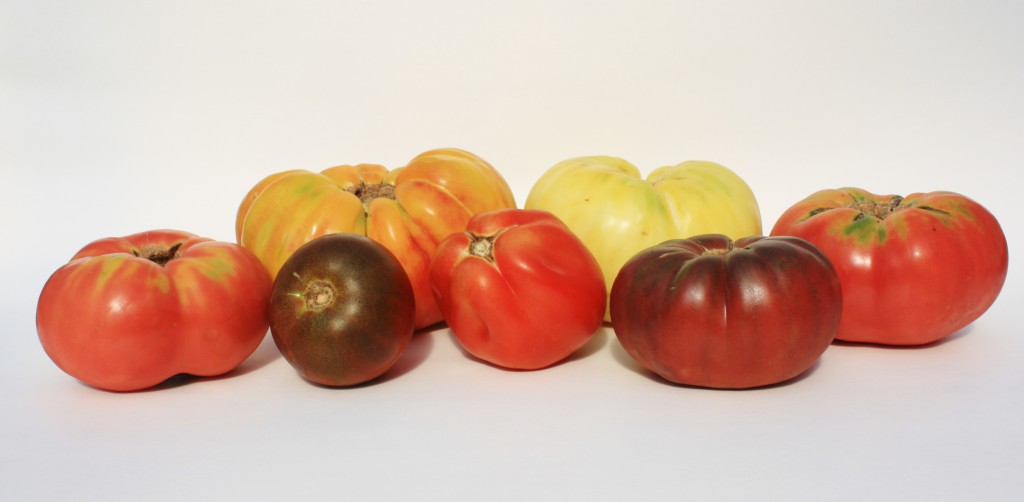
There are variety to choose from. photo credit: Blake Thaxton
The heat of August and the beginning of September can induce stress on the plant and inhibit fruiting. Because of this it is a good idea to choose “hot-set” varieties. These varieties are more tolerant to high temperatures. Typically tomatoes set fruit at temperatures of 65° to 85° Fahrenheit. “Hot-set” hybrid varieties have been selected for the ability to produce at temperatures slightly above that range. A few to look for in seeding catalogs and on seed company websites are Phoenix and Solar Fire.
To learn more, read Tomatoes in the Florida Garden or call you local extension office.
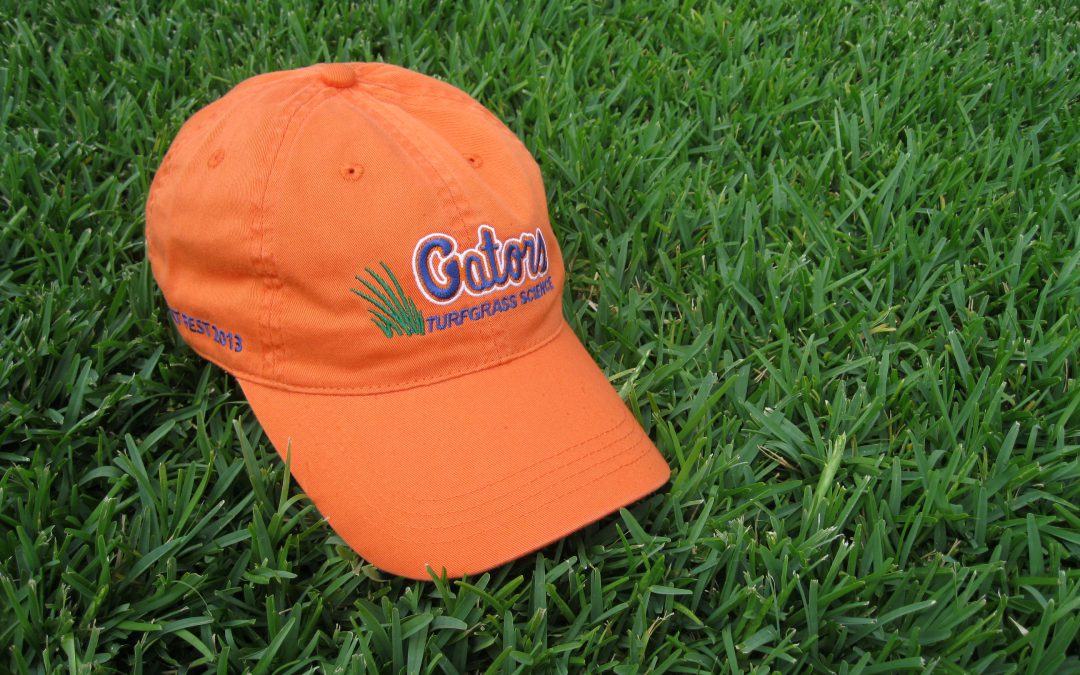
by Blake Thaxton | Jun 16, 2015
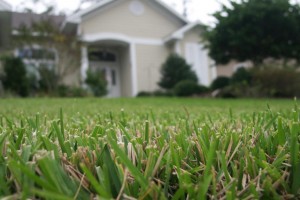
Image Credit: UF / IFAS
Time is flying! June has reached its halfway point and lawns are having to be maintained often. Let us take a few minutes to review some things that need to be considered when properly maintaining the lawn.
1. Mowing Height – Get out a tape measure and make sure you have the lawn mower deck set to the appropriate height for the species of turfgass in your lawn. Set the mower on pavement for a nice even surface when measuring. If you have been mowing the lawn too short, you could be “scalping” it and putting it under stress. Take a look at the chart below for appropriate mowing heights for common turfgrass species.
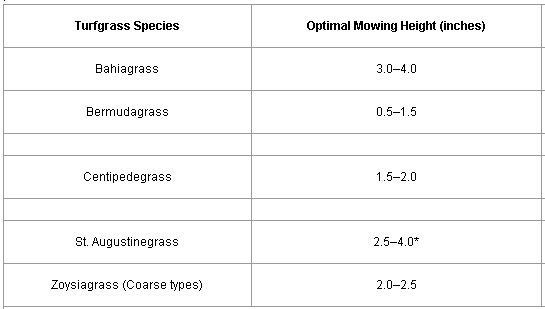
Mowing frequency- The frequency that the lawn needs to be mowed at is again dependent on the species of turfgrass that is being grown. More vigorous turfs, like bermuda, will require more frequent cuts than slower growing grasses, like centipede. The main rule of thumb is to mow at a rate that will cut to the appropriate height and only remove 1/3 of the total leaf blade.
Read more about Mowing Your Florida Lawn in the linked UF/IFAS publication. Several helpful tips from the publications follow:
- Mow in a different direction every time the lawn is cut. This helps prevent wear patterns, reduces the grain (grass lying over in the same direction), and reduces the possibility of scalping.
- Leave clippings on the ground. If clumping occurs, rake or use a leaf blower to distribute them.
- Sharpen the mower blade frequently enough to prevent tearing of leaf blades.
by Blake Thaxton | May 19, 2015
Every landscape manager and homeowner, especially on the gulf coast, wants to add a tropical feel to their landscape. One way to achieve this is to incorporate palms and other tropical plants into planting beds. Like any other plant, proper care is key to success. The improper care of palms stems from a lack of knowledge about the unique physiology and needs of palms. Palm care practices such as installing and pruning could be improved in Northwest Florida. University of Florida has some great resources available to homeowners and green industry professionals on palm care and maintenance. Let’s hit some highlights and use these tips to improve palm care in northwest Florida.

First, installation is very important with palms, as it is with all plants. One practice that ultimately results in death to a palm is planting too deeply. Some have done this in the past to help secure the palm from falling over. This may seem like a good idea but will harm the plant in many ways. Look at these two palms that were planted at the same time, do you see the difference?

Make sure that when you plant, dig the hole twice as wide as the rootball and only as deep as the rootball is tall. For support, build a supporting structure but do not nail directly into the trunk (this will allow an entry point for disease). Once planted, water the palm in thoroughly, ensuring that all the air pockets are filled If the fronds are tied up, untie them as soon as your palm is planted.

The next issue that faces many homeowners and landscape professionals is how to prune palms. Many prune a palm too severely for a variety of reasons. Take a look at this palm below for an example of a palm that has been pruned too drastically.

Follow the 9 to 3 clock rule, only pruning below the horizontal line of the crown of the palm. If you follow this rule you will generally be pruning correctly.

Read more about pruning, installing and general palm information for northwest Florida.
Photo Credits, University of Florida.
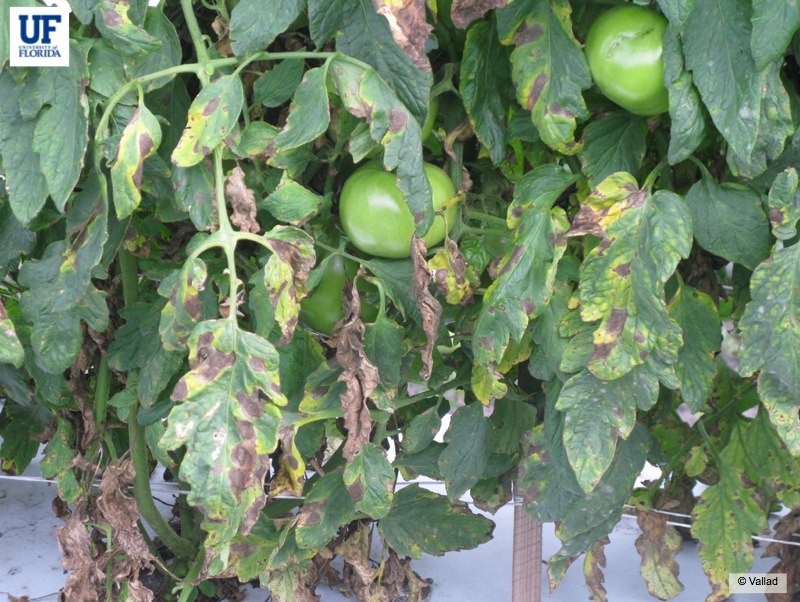
by Blake Thaxton | Apr 21, 2015
With the over abundance of rainfall the western panhandle has seen in recent weeks, tomato gardeners need to be aware of foliar diseases that could appear. Tomato leaves are an ideal host when moisture is present on the leaf surface. There are several of these diseases that, if not managed, can destroy the garden.
Early Blight

Advanced symptoms of Early Blight (Photo Credit: UF/IFAS U-Scout website)
Early Blight is a fungal disease that can affect tomato leaves and fruit. The disease is most prominent when temperatures are 80°F and excess moisture is present from rain or irrigation. The most classic system is the presence of leaf lesions that are approximately 1/2 inch in diameter.
Bacterial Spot

Bacterial Spot on a Tomato leaf (Photo Credit: Hank Dankers, From U-Scout)
Bacterial Spot can also cause problems for Florida tomato gardeners in rainy and high temperature periods. Generally the symptoms are darkened circular lesions on the leaves and fruit. Sometimes bacterial spot can be confused with other leaf lesion diseases. The bacterial spot will ooze when cut where as fungal type lesions will not.
How to prevent foliar diseases in tomato:
- Always start with disease free seed and transplants.
- Irrigate early in the day to minimize the time the leaves stay wet. Use drip irrigation when possible.
- Remove blighted leaves when the garden is dry. This technique should not be relied on exclusively.
- Remove and destroy crop residue at the end of the growing season. If not removed, it can become a breeding ground for disease next year.
- Rotate to different plant families that are not affected by the same diseases.
- Spray protective fungicides such as Mancozeb, Copper, and Chlorothalonil (for example sold as Daconil) when the conditions are right for disease (higher temperatures, excessive moisture, and rainfall).
If you have questions about these diseases or other tomato diseases, please comment below or call your local UF/IFAS Extension Agent.
















